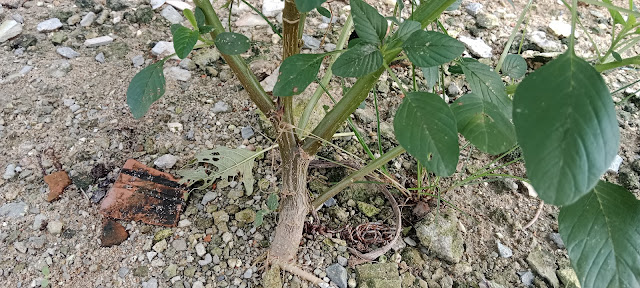Plants, in general, are indispensable to the functioning of ecosystems and the sustenance of life on Earth. Among these, Sterculia foetida, commonly known as "Phte" in Khmer, stands out for its ecological, economic, and medicinal significance. This article explores the essential role of plants like Sterculia foetida (Phte) in supporting human life, wildlife, and the planet, while also detailing the plant’s natural habitat, global distribution, and origins.
1. Importance of Plants to Humans, Animals, and the Earth
A. Importance to Humans
Plants are crucial for humans in numerous ways, ranging from their role in food production to their use in medicine, industry, and environmental preservation.
Food & Nutrition: Plants provide the foundation of human diets, offering vital nutrients, carbohydrates, fats, and proteins. Many plants, such as fruits, vegetables, and grains, are consumed directly, while others, like Sterculia foetida, provide less common but culturally important sources of food. For instance, certain parts of Sterculia foetida, such as its seeds, have been used in some regions as food, albeit with proper preparation due to their potentially toxic properties when raw.
Medicinal Uses: Plants are central to traditional and modern medicine. For centuries, humans have used plants for their healing properties. Sterculia foetida is believed to have medicinal qualities and has been utilized in folk medicine in various Southeast Asian cultures, treating conditions ranging from digestive issues to inflammation. However, careful handling and processing are required due to the plant’s toxic components.
Raw Materials: Plants supply raw materials for industry, including timber, fibers, and oils. The strong, durable wood of Sterculia foetida is utilized in construction and carpentry, making it a valuable resource in rural economies. Its wood is prized for its hardness and resistance to decay, often used for building houses, furniture, and boats.
Environmental Services: Plants play a fundamental role in regulating the atmosphere. Through photosynthesis, they absorb carbon dioxide and release oxygen, thus reducing greenhouse gas levels and contributing to air quality. Forests of trees like Sterculia foetida act as carbon sinks, vital to mitigating climate change.
B. Importance to Animals
Food Source: Plants are the primary producers in food chains, forming the base for herbivores, which in turn sustain carnivores and omnivores. Sterculia foetida contributes to this food chain by providing a source of sustenance for animals, such as monkeys and various insects that feed on its fruits or seeds.
Habitat: Plants, including trees like Sterculia foetida, create habitats for numerous species of wildlife. From small insects and birds to large mammals, the shade and shelter provided by plants support a diverse range of animals, contributing to biodiversity.
Biodiversity & Ecological Balance: By supporting diverse species, plants maintain ecological balance. The presence of a variety of plant species ensures the survival of animals and the overall health of ecosystems.
C. Importance to the Earth
Soil Protection and Fertility: Plants prevent soil erosion by stabilizing the earth with their roots. Trees like Sterculia foetida are important for maintaining soil health, promoting nutrient cycling, and protecting against landslides, especially in tropical regions with high rainfall.
Water Cycle Regulation: Plants play a key role in the water cycle. Through transpiration, plants release water vapor into the atmosphere, which contributes to cloud formation and precipitation. This process is vital for maintaining stable weather patterns and replenishing water resources.
Climate Regulation: Large-scale forests, including those where Sterculia foetida grows, act as carbon sinks that help to regulate global temperatures. By absorbing carbon dioxide, plants reduce the concentration of this greenhouse gas in the atmosphere, which in turn mitigates climate change.
2. Distribution and Habitat of Sterculia foetida (Phte)
Sterculia foetida, or Phte, is a tropical tree species native to Southeast Asia. It thrives in warm, humid climates, typically growing in lowland and hilly areas. The tree can be found in forests, along riverbanks, and in disturbed areas, where it is able to establish itself and contribute to the biodiversity of the ecosystem.
Geographical Range:
Southeast Asia: Sterculia foetida is predominantly found in countries such as Cambodia, Thailand, Vietnam, Laos, and Malaysia. It is commonly seen in tropical forests and regions with significant rainfall.
South Asia: The tree is also native to parts of South Asia, particularly in India, Sri Lanka, and Bangladesh. It thrives in these regions due to the favorable tropical and subtropical climate.
Oceania: Sterculia foetida has extended its range to Oceania, with occurrences in Papua New Guinea, the Solomon Islands, and other Pacific island nations.
Other Tropical Regions: While its primary range is in Asia and Oceania, Sterculia foetida has been introduced to other tropical regions of the world, including some parts of Africa and South America, where it is grown for its timber and other uses.
3. Origin and Historical Spread
Sterculia foetida is believed to be indigenous to the Indo-Malay region, where it has existed for thousands of years. Its distribution has expanded over time due to human activities, including the use of its wood, seeds, and other parts. As global trade and exploration increased, the tree was introduced to new regions with similar tropical climates. Today, it is widely cultivated for its commercial and ecological benefits.
Conclusion
Sterculia foetida (Phte) is an important tropical tree with significant ecological, economic, and cultural value. It plays a crucial role in maintaining biodiversity, supporting wildlife, and regulating the Earth's climate and water cycles. For humans, it provides essential materials for construction and traditional medicine. Its global distribution, from Southeast Asia to Oceania, underscores its adaptability and importance. As we face the challenges of climate change and biodiversity loss, plants like Sterculia foetida remind us of the irreplaceable role that vegetation plays in sustaining life on Earth.





